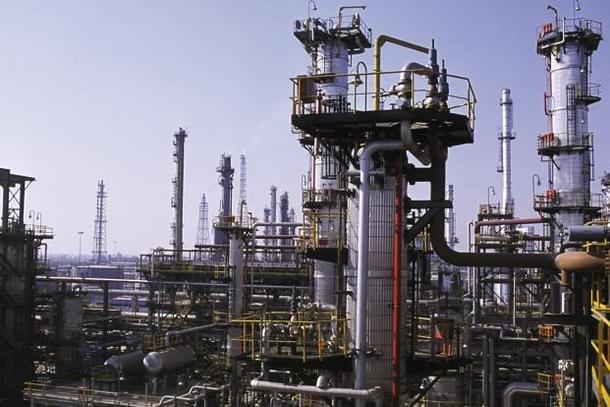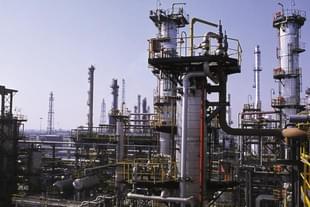Magazine
Oil On The Boil: How It Can Affect The Government’s Finances
Anupama Airy
May 01, 2018, 01:01 PM | Updated 06:17 AM IST
Save & read from anywhere!
Bookmark stories for easy access on any device or the Swarajya app.


Crude oil prices have been on a boil for more than a month, a move that has triggered fresh concerns across the globe. Moreover, the tensions in Middle East and the increasing possibilities of Western military action in Syria coupled with falling global inventories have further worsened the situation.
For India, this trend is extremely worrying — both economically and politically. Amidst rising crude oil prices, even the Indian rupee hit its lowest level against the US dollar in about seven months. On 17 April, the Indian rupee lost about 1 per cent to close at 65.65 a dollar, a level not seen since 27 September last year. Given that India imports over 80 per cent of its oil requirements, any increase in crude oil prices coupled with rupee depreciation has a direct impact on its oil import bill and hence the current account deficit.
Politically, this is making it hard for the government as multiple state elections are round the corner and the general elections are also only a year away. This was clear when Prime Minister Narendra Modi in his speech on 11 April called for a global consensus on “responsible pricing”.
Brent crude oil prices — the benchmark that India uses, posted its biggest gains since July last year and crossed $70 a barrel in the middle of April. Tensions in Syria, Yemen and Iran are expected to keep oil prices high and if US President Donald Trump, in a decision expected this month, decides to restore sanctions on Iran, which is OPEC’s third biggest oil producer, the prices will only peak further. (OPEC or Organisation of the Petroleum Exporting Countries is the cartel of oil producing nations and is a key influencer when it comes to oil prices.)
Any upward movement in oil prices has a direct impact on domestic prices of petrol and diesel. For consumers, high prices will mean paying more for their fuel and air ticket bills. High oil prices have a cascading effect on all sectors, thereby triggering inflation.
The ongoing upswing in crude oil prices over the months has created a havoc of sorts as petrol prices have been hiked seven times and by over Rs 4 a litre in the past four months since 31 December 2017. Petrol prices in New Delhi are the highest since September 2013 while in Mumbai they are at a four-year high since March 2014. In Kolkata and Chennai, petrol prices are at near seven-year highs of May 2012.
The Politics Of Oil
The Narendra Modi-led NDA government, soon after it came to power in 2014, reaped the benefits of low crude oil prices. Oil prices stood at $26 a barrel in February 2016 and the government enjoyed the party for more than two years, after which prices started moving up and touched the highs of $55 in December 2017 and now crossing $70 a barrel mark.
Interestingly, and ahead of the multiple state elections, the oil companies, despite a major spike in global oil prices did not implement a hike in the prices of domestic fuels — petrol and diesel. When faced with criticism that this has been done under instructions from the government with an eye on the forthcoming elections, the oil companies went into denial mode and came out with clarifications that “no instructions were given to them by the government”.
And then as a formality, the companies announced a negligible increase in petrol and diesel prices on 18 April. While petrol prices were hiked by a mere 5 paise, diesel prices were upped by 9 paise. New pump prices of the two auto fuels were made applicable from 6 am on 19 April.
However, officials on the condition of anonymity did admit that this was done to deny media allegations that the government, ahead of elections, have told the oil companies not to increase the prices of the auto fuels. “Our losses on both petrol and diesel were around 70 paise to Re one a litre, despite the current increase of just 5-9 paise a litre,” said an oil company official.
Being the election year, the government can dole out benefits for the consumer by implementing a cut in excise duties on petrol and diesel. Sources said that while an immediate cut in excise duty on auto fuels is unlikely with inadequate revenue collections, but going forward, if global oil prices continue to go up, the government may hold back a hike in pump prices of fuels and implement some duty cuts.
The Guzzlers And The Producers
This is not for the first time that India and China — the two biggest consumers and importers of crude oil in the world — have decided to come together and draw up a joint strategy to protect their interests. This marriage of convenience was obvious, considering the fact that it’s a buyers’ market and any cooperation amongst oil-consuming nations will only put pressure on the oil-producing countries who are charging an Asian premium from India, China and others for supplying oil. The premium is the higher price paid by Asian countries for oil purchases as compared to those in Europe and North America.
While speaking to the media at the recently concluded conference of the 16th International Energy Forum on 12 April, Union Petroleum and Natural Gas Minister Dharmendra Pradhan said that India and China are looking at cooperation on crude procurement, scouting for oilfields, bringing in the best enhanced oil recovery activities and technology sharing.
China National Petroleum Corporation chairman Wang Yilin and Indian Oil chairman Sanjiv Singh have also been appointed as the point persons for taking the collaborative effort between the two countries forward, Pradhan said.
Road Ahead
The outlook for the world oil prices remains unclear with varying forecasts. Much as India or China would want the oil prices to come down, industry sources said that oil producers like Saudi Arabia (world’s top oil producer), Iran and other Middle East nations will be happy to see prices rise to $80 or even $100 a barrel.
“A high price will help their economies. OPEC, along with Russia and other oil producers, will meet in June to review their decision of January 2017 of reduction in supplies till December 2018. It is unlikely that they will take a relook at their earlier stance, thereby keeping crude prices high,” a senior oil industry official told Swarajya.
Petroleum Ministry officials said that an average price of $50-55 a barrel is sustainable for the economy. Anything above these levels can imbalance the country’s finances.
Anupama Airy is a senior journalist and executive editor of Swarajya. She is also the founder and editor of DefenceAviationPost.com and EnergyInfraPost.com.





